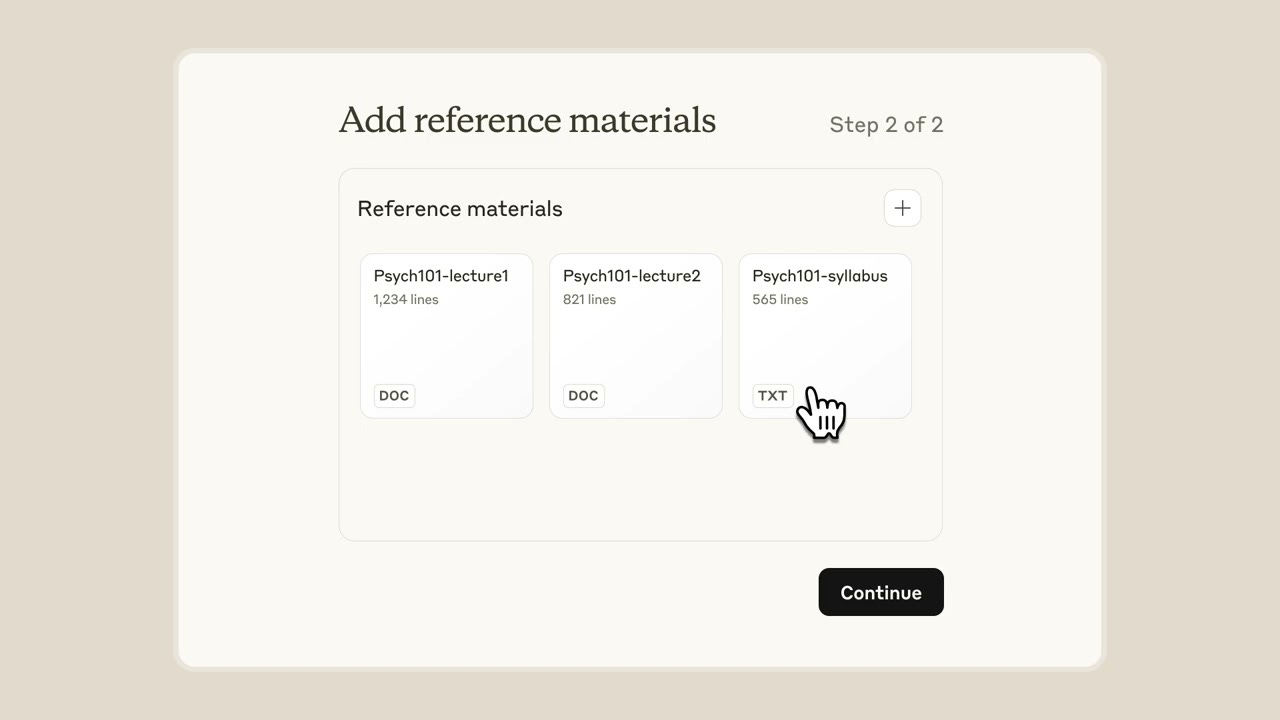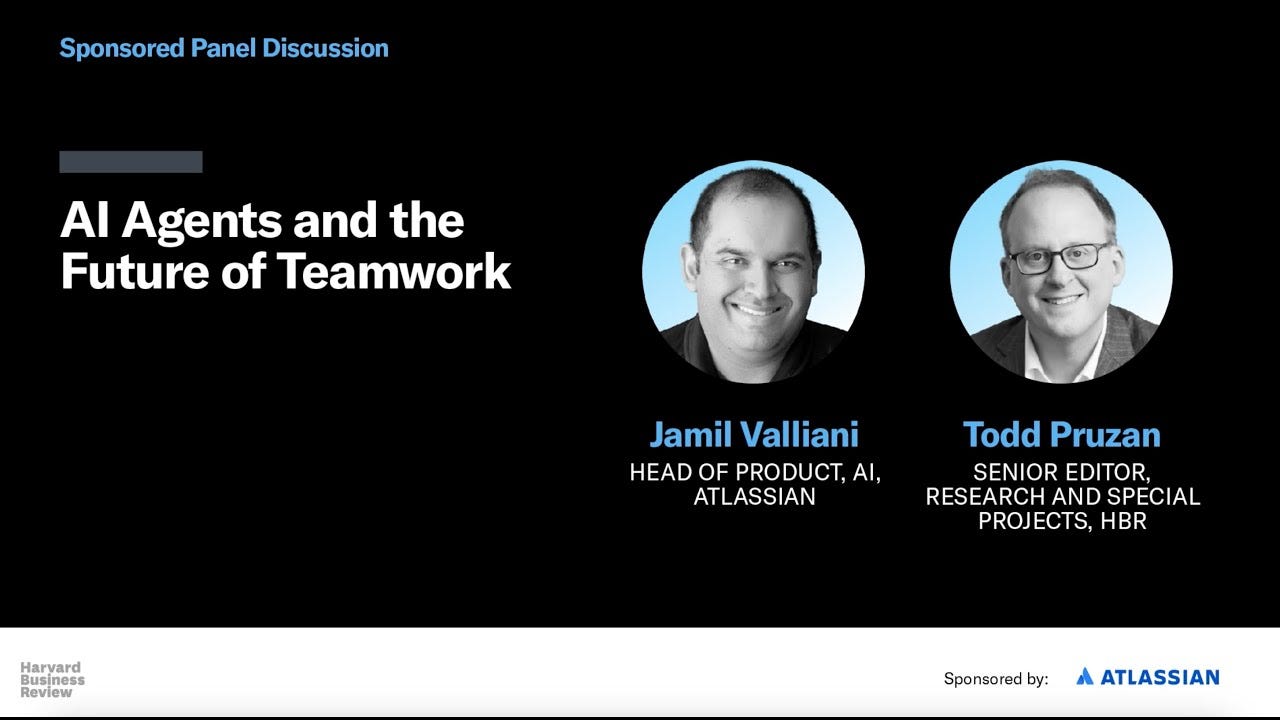#014: From Human to AI Agent: The Breathtaking Evolution Reshaping Our World
A journey through the most mind-blowing AI capabilities of our time and how they're converging to create something greater than the sum of their parts.
(the images are clickable. Click on them to go to additional content!)
The Dawn of a New Intelligence
Imagine waking up five years ago and describing today's AI landscape to your past self. You'd likely be met with disbelief, perhaps even laughter. Yet here we are, witnessing artificial intelligence evolve at a pace that continues to defy expectations. What began as narrow, task-specific algorithms has blossomed into something far more profound—a technological renaissance that's redefining the boundaries between human and machine capabilities.
This isn't just another technology story. It's the beginning of a new chapter in human history.
Language: The First Breakthrough
Our journey begins with language—the fundamental medium of human thought and expression. When OpenAI unveiled GPT-4, it marked a watershed moment in artificial intelligence. These systems don't just string together grammatically correct sentences; they understand context, generate creative content, and reason through complex problems in ways that feel remarkably human.
Watch: OpenAI's live demonstration of GPT-4o vision capabilities
The scale of AI-generated content is already staggering—an estimated 100 billion words per day. That's equivalent to publishing the entire works of Shakespeare approximately 1,300 times every 24 hours.
Yet quantity isn't the real story here. What's truly remarkable is the quality and versatility of this content. From crafting marketing copy to coding complex applications to writing poetry that stirs genuine emotion, these systems have transformed from tools into creative partners.
But this was just the beginning.
Vision: AI Learns to See Our World
As language models were revolutionizing text, another breakthrough was unfolding in the visual domain. DALL-E and similar image generation models demonstrated an uncanny ability to transform text descriptions into vivid, detailed images that never existed before.
Watch: How to get the best results with DALL-E 3
Consider for a moment what this means: AI can now visualize concepts it has never directly observed. It can blend styles, imagine fantastical scenes, and create visual content that would take human artists hours or days to produce—all in seconds.
The implications ripple across industries. Designers can rapidly prototype concepts. Filmmakers can visualize scenes before shooting. Architects can generate multiple renderings of spaces that don't yet exist.
But the story of AI's evolution was about to take an even more fascinating turn.
Meta-Intelligence: AI That Creates AI
If language and vision represent the fundamental input/output channels for human intelligence, what followed next ventures into territory without clear human parallels: AI systems that can create and improve other AI systems.
Watch: How AI agents are changing everything
Emergence AI demonstrated a capability that sounds like science fiction: creating its own AI agents. Meanwhile, Amazon's AGI Lab has developed advanced AI systems with decision-making capabilities inspired by robotics, allowing them to interact with the digital world much as physical robots navigate the physical one.
This represents a profound shift in the AI landscape. When artificial intelligence can improve itself—potentially at an accelerating pace—we enter uncharted territory in terms of capabilities and applications.
The implications are both exhilarating and challenging to comprehend. As philosopher Nick Bostrom noted, "Machine intelligence is the last invention that humanity will ever need to make."
Science: AI as a Research Partner
While these developments were capturing public imagination, AI was quietly transforming scientific research in ways that could prove even more consequential over time.
Watch: The Economist explores how AI is transforming scientific discovery
Berkeley's Evo 2 model represents a breakthrough in genetic research, accurately predicting the effects of genetic mutations across all domains of life. Google has highlighted AI's role in solving previously intractable scientific problems, from protein structure prediction to flood forecasting.
In each case, AI isn't simply automating rote tasks—it's enabling discoveries that would be difficult or impossible for humans working alone. The scientific method itself is being augmented and accelerated.
As one researcher put it: "We're not just using AI to do science faster. We're using it to do science differently."
Infrastructure: Building for an AI-Native World
These leaps in capability have driven corresponding advances in the infrastructure that powers AI systems. Google's Ironwood TPU is a prime example—a specialized processor designed to handle the unique computational demands of advanced AI.
These developments aren't merely technical footnotes. They represent the physical foundation that makes the AI revolution possible—and affordable. As computing power becomes more efficient and accessible, we're witnessing a democratization of AI capabilities that were once limited to tech giants with massive resources.
Collaboration: When AIs Talk to Each Other
If individual AI capabilities represent the building blocks of this new era, the next logical step is enabling these systems to work together. Google's Agent2Agent (A2A) protocol is designed precisely for this purpose—creating a standard way for AI systems to communicate and collaborate.
Watch: Y Combinator's take on the next breakthrough in AI agents
This development solves a fundamental challenge: how do we harness the specialized capabilities of different AI systems to tackle complex problems that require multiple forms of intelligence?
The A2A protocol enables a new paradigm where AI systems can seamlessly coordinate, share information, and leverage each other's unique strengths—much as human specialists collaborate on complex projects.
Education and Accessibility: AI for Everyone
As AI capabilities have expanded, they've also become more accessible to ordinary people in meaningful ways. Anthropic's Claude has found significant application in universities, helping students learn more efficiently and innovatively.
Watch: Anthropic's introduction to Claude for Education
Voice-based tools like Aqua Voice 2 are improving accessibility for people with disabilities. Custom AI agents are enabling businesses to create specialized solutions without deep technical expertise.
In each case, we're seeing AI capabilities extended to new users and use cases—creating value not just through raw technical advancement but through thoughtful application to human needs.
The Human Element: Teams Transformed
Perhaps most intriguingly, research is beginning to reveal how AI transforms human collaboration. Studies show that AI-assisted teams significantly outperform traditional teams, suggesting that AI can effectively replace or enhance certain team functions.
Watch: Atlassian's perspective on AI agents and the future of teamwork
This isn't about replacing humans with machines. Rather, it's about creating new collaborative structures that leverage the unique strengths of both human and artificial intelligence. The most successful organizations of the future will be those that master this human-AI symbiosis.
The Convergence: From Tools to Agents
As we step back and observe these developments collectively, a profound pattern emerges. What began as separate technological advances in language, vision, scientific research, and other domains is converging toward something qualitatively different—a transition from AI as tools to AI as agents.
This is the heart of our story: we are witnessing the birth of AI systems that don't just perform isolated tasks but act with increasing autonomy in complex environments. They observe, decide, act, and learn in ways that increasingly resemble agency rather than automation.
The distinction is crucial. Tools extend human capabilities but require constant direction. Agents understand goals and independently determine how to achieve them.
The Future Belongs to Those Who Understand This Shift
This evolution from AI tools to AI agents represents the central inflection point in modern technology—and perhaps in human history. As we stand at this crossroads, three truths become evident:
The pace of change will continue to accelerate. What seems remarkable today will be commonplace tomorrow.
The most valuable skills will be those that complement AI rather than compete with it. Human creativity, ethical judgment, and interpersonal connection will become even more precious.
The greatest opportunities will come from reimagining rather than merely automating. Organizations that simply use AI to do the same things faster will be outpaced by those who envision entirely new possibilities.
The future doesn't belong to AI. It belongs to the humans who best understand how to partner with it.
As we face this unprecedented future, we should approach it neither with blind optimism nor paralyzing fear, but with clear-eyed wonder and responsibility. We are the first generation to witness the birth of a new form of intelligence—and that carries both extraordinary privilege and profound obligation.
The tools of creation have never been more powerful. The question now is what we will create with them.
What's your perspective on these AI developments? Which capability most excites or concerns you? Share your thoughts in the comments below.











